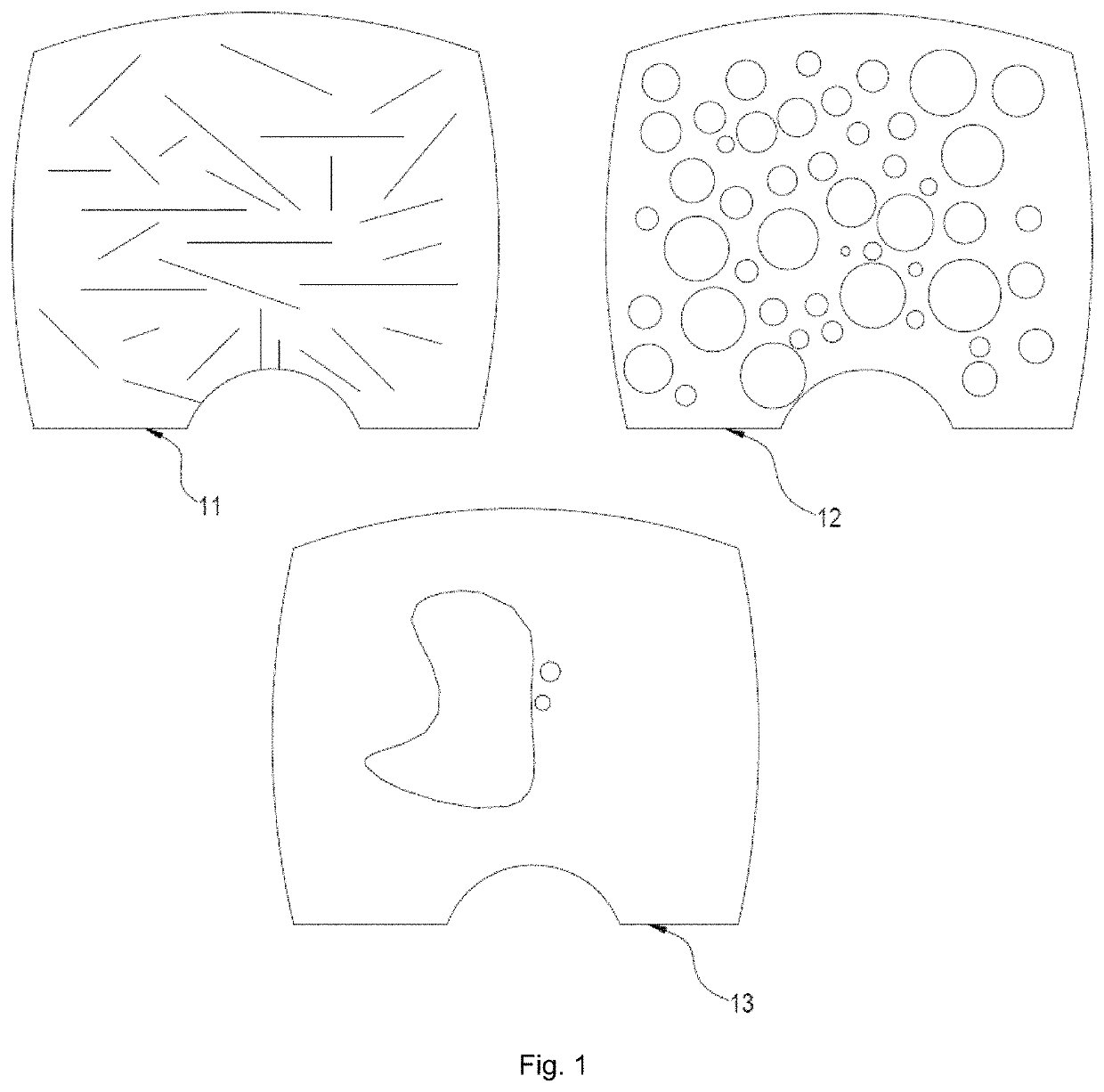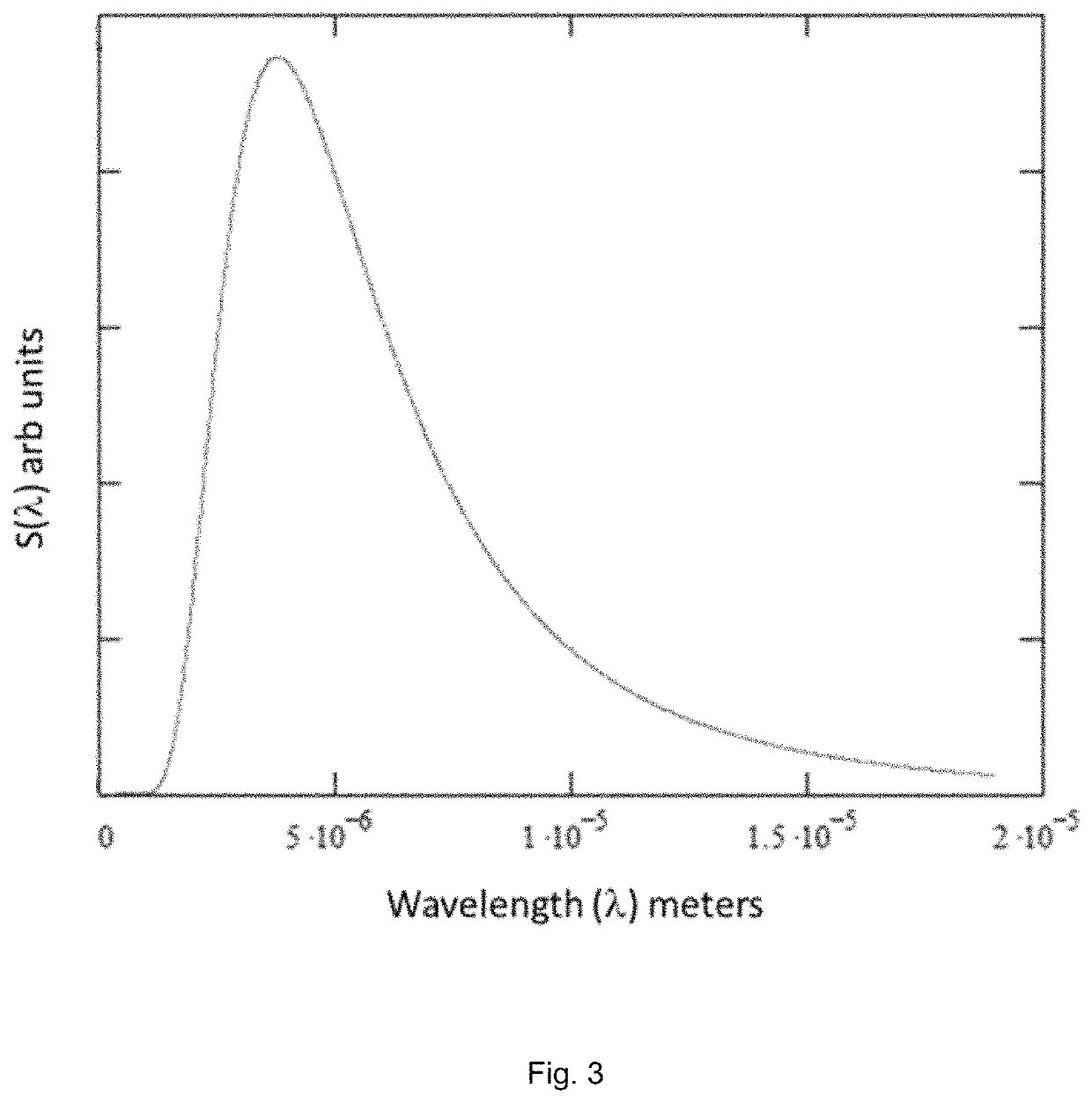Burn saver device
a technology of burn-saving device and burner, which is applied in the direction of heat measurement, instruments, optical radiation measurement, etc., can solve the problems of difficult for them to know if the external environment has become dangerous, the response time of these devices is too slow to be useful, and the danger of class iv fires is extremely dangerous, etc., to achieve the effect of small effective surface area, and large effective surface area
- Summary
- Abstract
- Description
- Claims
- Application Information
AI Technical Summary
Benefits of technology
Problems solved by technology
Method used
Image
Examples
example 1
ing Apparatus
[0172]An apparatus for testing the Burn Saver device was constructed and calibrated to operate in free and forced convection, and in radiation heat transfer modes (FIG. 25). The heat transfer modes match key set points derived from research efforts by Mensch et al. 2011 and Donnelly et al. 2006 that describe the heat fluxes and air temperatures used to classify fires into four hazard types (FIG. 14).
[0173]The apparatus acts like a convection oven that has been designed so that both convective and radiative heat loads can be varied simultaneously and independently. Calibration of the unit was done to characterize the output of the radiant heater at stepped power input levels.
[0174]The radiant power level was obtained by using the IR source to heat a round aluminum billet that had been coated with acetylene black (ε=0.97). The calorimeter was in direct line of sight with the IR source. The heat flux can be determined by measuring the temperature rise of the metal billet a...
example 2
e of a Burn Saver Device with One Square and One Rectangular Sensing Element
[0178]In this example two front facing foils of different size are used to simultaneously measure radiant heat flux and ambient temperature (FIG. 29). The large foil 901 is 0.25 inches by 0.75 inches and the small foil 902 is 0.25 inches by 0.25 inches. Both foils are heated radiantly and convectively, but they have different convective heat transfer coefficients because of their different sizes, which permits calculating the ambient temperature. This example also uses an optional flow straightening device 904 attached to the front of the Burn Saver that increases the convective heat transfer coefficients substantially by increasing the amount of flow that directly impinges onto the foils. This modification does not block any IR and protrudes 0.25″. Thermocouple wires 903 are attached to the foil.
[0179]The IR sensor foils were coated with a high temperature, high emissivity, flat-black spray paint (Rustoleum...
example 3
Burn Saver Device: Two Sizes of Detector Foils are Used in the Front Sensor
[0181]The temperature vs. time data from the two foils is used to calculate the heat flux (equation 12) and ambient temperature (equation 18).
[0182]Calculating the radiative heat flux is done using the data from the front, top and back thin foil sensors (FIG. 33). Alternative designs are possible with more or fewer sensors in different direction. IR is directional because it is electromagnetic radiation. The heat flux (kW / m2) is calculated (equation 12) the same way that we calibrated our IR source with the calorimeter except that our thermal masses (the foils) are much smaller than the mass of the blackened aluminum billet. In FIG. 32 the sensor foil heats up to steady state in about 6 seconds after the 10 kW / / m2 IR source is switched on, which gives a heating rate of 26° C. / sec. The slope of the temperature vs. time curve is used to calculate the radiant heat flux using Equation 12.
[0183]Equation 12. Radian...
PUM
| Property | Measurement | Unit |
|---|---|---|
| Biot number | aaaaa | aaaaa |
| thick | aaaaa | aaaaa |
| thick | aaaaa | aaaaa |
Abstract
Description
Claims
Application Information
 Login to View More
Login to View More - R&D
- Intellectual Property
- Life Sciences
- Materials
- Tech Scout
- Unparalleled Data Quality
- Higher Quality Content
- 60% Fewer Hallucinations
Browse by: Latest US Patents, China's latest patents, Technical Efficacy Thesaurus, Application Domain, Technology Topic, Popular Technical Reports.
© 2025 PatSnap. All rights reserved.Legal|Privacy policy|Modern Slavery Act Transparency Statement|Sitemap|About US| Contact US: help@patsnap.com



